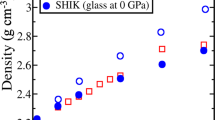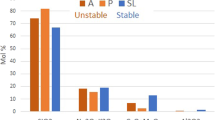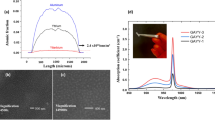Abstract
SOME specimens of silica glass absorb infra-red radiation of wave-length near 2.7µ. Garino-Canina1 observed that the occurrence or absence of the band in his specimens depended on whether or not water vapour was present when the glass was made (by fusing quartz crystal). Following Harrison2, he attributed the absorption to hydroxyl groups bound to some of the silicon ions of the glass.
This is a preview of subscription content, access via your institution
Access options
Subscribe to this journal
Receive 51 print issues and online access
$199.00 per year
only $3.90 per issue
Buy this article
- Purchase on Springer Link
- Instant access to full article PDF
Prices may be subject to local taxes which are calculated during checkout
Similar content being viewed by others
References
Garino-Canina, V., C.R. Acad. Sci., Paris, 239, 705 (1954).
Harrison, A. J., J. Amer. Cer. Soc., 30, 362 (1947).
Author information
Authors and Affiliations
Rights and permissions
About this article
Cite this article
MOULSON, A., ROBERTS, J. Entry of Water into Silica Glass. Nature 182, 200–201 (1958). https://doi.org/10.1038/182200a0
Issue Date:
DOI: https://doi.org/10.1038/182200a0
This article is cited by
Comments
By submitting a comment you agree to abide by our Terms and Community Guidelines. If you find something abusive or that does not comply with our terms or guidelines please flag it as inappropriate.



